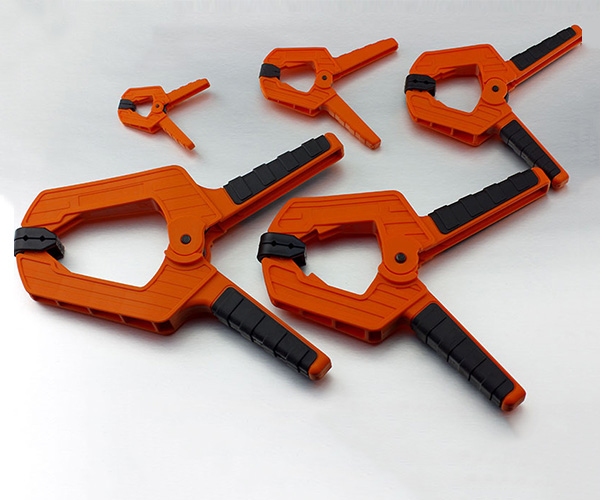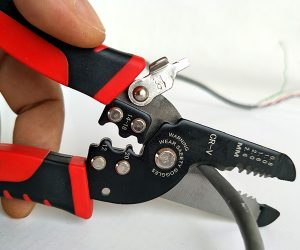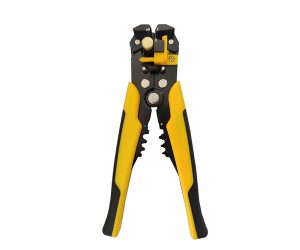Spring clamps are incredibly versatile tools that provide quick, reliable solutions across a variety of industries. Whether you’re tackling a DIY project at home, engaging in woodworking, or repairing vehicles, spring clamps serve an essential role. In this article, we’ll explore the top five uses for spring clamps, highlighting their benefits, and explaining why they should be a staple in any toolkit. Ready to dive into how these small but powerful tools can make your projects easier and more efficient? Let’s go!
1. What is a Spring Clamp and How Does it Work?
Spring clamps are simple tools that use a spring mechanism to apply force, holding objects in place. The basic design consists of two metal arms connected by a spring that pushes them together, ensuring a firm grip. The user applies pressure to the arms, opening the jaws to place it on the materials, and once released, the spring force keeps the clamp closed. It’s this simple yet effective design that makes spring clamps so handy for a variety of tasks. But here’s the kicker—despite their simplicity, they deliver impressive power!
What’s the real story behind these clamps? They come in different sizes and materials, such as plastic or steel, with each material offering its own set of benefits. For example, plastic spring clamps are lightweight and ideal for holding delicate materials, while steel spring clamps offer greater strength for more demanding tasks.
These tools are great because they provide a temporary hold—perfect when you’re working on a project and need to secure something without permanently attaching it. The next time you’re doing repairs or a creative project, don’t overlook this simple tool!
| Type of Spring Clamp | Material | Typical Use |
|---|---|---|
| Small Spring Clamp | Plastic | Lightweight tasks, crafts |
| Medium Spring Clamp | Steel | Woodworking, light-duty repairs |
| Large Spring Clamp | Steel | Heavy-duty applications |
2. What Are the Top Uses of Spring Clamps?
Spring clamps offer exceptional versatility across many industries. So, what are the most common uses? Let’s break them down into a few key areas. You might be wondering where these clamps fit into your toolbox, so keep reading!
One of the most popular uses for spring clamps is in crafting and arts projects. These clamps are perfect for holding materials together while you work on intricate designs, whether you’re assembling a frame, gluing pieces together, or clamping down fabric for sewing. They allow for precise, temporary holding without damaging delicate materials.
Spring clamps are also indispensable in woodworking. When cutting or drilling, holding the wood in place is crucial. These clamps can hold the material steady while you work on it, making sure that everything stays aligned. For instance, when working on a wooden frame or joining two pieces together, these clamps provide just the right amount of pressure to keep everything in place without causing any damage.
Furthermore, spring clamps have found their place in automotive repairs. When working with car parts, you often need to temporarily hold parts in position, and spring clamps excel in doing just that. From securing parts while welding to holding gaskets in place, these tools are surprisingly useful for automotive professionals.
| Use Case | Common Task | Tool Type |
|---|---|---|
| Crafting | Framing, gluing | Small Plastic Clamp |
| Woodworking | Securing wood for cutting/drilling | Medium Steel Clamp |
| Automotive | Holding parts in place for repairs | Large Steel Clamp |
3. How Do Spring Clamps Benefit DIY Projects?
DIY enthusiasts know the value of having the right tools at hand. And spring clamps are among the most reliable tools for home improvement projects. But here’s where it gets interesting—spring clamps combine portability, strength, and convenience in one compact design, making them the perfect tool for DIY projects.
From securing pieces of wood for simple repairs to holding fabric in place while you sew, these clamps make it easier to get the job done without extra hands. They allow for hands-free work, giving you the freedom to focus on the task at hand while the clamp holds everything securely.
For example, when fixing a broken chair or assembling a bookshelf, spring clamps can temporarily hold the joints in place while the glue sets or screws are inserted. They also work well for positioning materials on workbenches. But here’s the kicker—since they are so affordable and easy to use, you won’t have to invest in expensive, bulky clamps for most DIY jobs.
| Project Type | Clamp Benefit | Recommended Clamp |
|---|---|---|
| Simple repairs | Holds pieces while gluing or screwing | Small Steel Clamp |
| Assembly | Holds materials on workbench | Medium Steel Clamp |
| Crafts | Keeps fabric or lightweight materials in place | Small Plastic Clamp |
4. How Are Spring Clamps Used in Woodworking?
When it comes to woodworking, accuracy and stability are crucial. Spring clamps are often used to secure materials in place while working on intricate tasks, such as sanding, gluing, or drilling. What’s the real story? These clamps are an essential part of any woodworker’s toolkit because they provide an adjustable, secure grip without requiring a lot of effort.
For example, when building furniture, spring clamps can hold pieces of wood together while the adhesive dries. Instead of worrying about keeping the pieces in place with your hands, you can focus on other tasks and let the clamps do their job. They are also helpful when working with smaller items, like picture frames or model parts, where precision is key.
The strength of the clamp ensures that even large boards or panels stay firmly in place while you work. Whether you’re securing material for sanding, drilling, or cutting, these clamps deliver reliable performance. But here’s the kicker—they are also lightweight and easy to maneuver, which is why they are favored by so many woodworkers.
| Woodworking Task | Clamp Benefit | Recommended Clamp Size |
|---|---|---|
| Gluing | Holds material steady during drying | Medium Steel Clamp |
| Cutting/Drilling | Secures material for cutting/drilling | Large Steel Clamp |
| Assembly | Temporarily holds parts together | Small Steel Clamp |
5. What Role Do Spring Clamps Play in Automotive Repair?
Spring clamps aren’t just for household projects. In the world of automotive repair, they can be an invaluable tool. Whether you’re working under the hood or performing repairs on car body parts, spring clamps provide the temporary, secure hold needed for a variety of tasks. This is where it gets interesting—despite their simple design, spring clamps play a huge role in keeping automotive repairs on track.
When repairing a vehicle, it’s often necessary to hold parts in place temporarily while other components are being installed or welded. Spring clamps are perfect for this, as they can secure components in place without taking up much room or requiring extra effort. They are commonly used in tasks like welding, sealing, and holding gaskets in position.
Plus, their compact size makes them easy to store in the tool kit, and their quick-release mechanism makes them simple to use. But here’s the kicker—whether you’re repairing small components or working on larger automotive tasks, these clamps are durable and reliable, making them a go-to tool for many professionals in the field.
| Automotive Task | Clamp Benefit | Recommended Clamp Type |
|---|---|---|
| Welding | Holds parts in place during welding | Large Steel Clamp |
| Sealing | Keeps gaskets and seals in place | Medium Steel Clamp |
| Maintenance | Holds components while working | Small Plastic Clamp |

6. How Can Spring Clamps Be Utilized for Crafting and Art Projects?
Crafting and art projects often require precision and the ability to hold materials together temporarily while you work. Spring clamps excel in this role, making them indispensable for anyone who enjoys working with different materials. Ready for the good part? These clamps allow you to secure your pieces without damaging delicate materials, ensuring a clean and smooth outcome every time.
One of the most common uses for spring clamps in art and crafting is framing. When you’re assembling frames for photos or artwork, you need a secure hold while you adjust or glue the pieces together. Spring clamps provide this, making the entire process easier and faster. They’re also commonly used when working with fabric, especially in quilting or sewing projects. When you need to hold fabric in place while stitching or gluing, spring clamps do the job perfectly without leaving marks or creases.
For model-making and sculpture, these clamps work wonders in holding materials in place while the adhesive sets or when working on delicate parts of the model. Since they apply consistent pressure, they’re ideal for securing small components. The best part? Their portability makes them easy to take with you wherever your creative project takes you. Spring clamps are an essential tool for anyone who loves crafting or working with delicate materials.
| Crafting Task | Clamp Benefit | Recommended Clamp Size |
|---|---|---|
| Framing | Holds pieces in place while gluing | Small Plastic Clamp |
| Sewing/Quilting | Secures fabric without damage | Small Plastic Clamp |
| Model-making | Holds small components while gluing | Small Steel Clamp |
7. What Are the Advantages of Using Spring Clamps?
Spring clamps are not only incredibly versatile, but they also come with several distinct advantages that make them a go-to tool for many professionals and hobbyists alike. You might be wondering why these clamps are so popular, and here’s where it gets interesting—their simplicity and practicality are what set them apart.
First, spring clamps are lightweight and portable, making them easy to carry around and store. They don’t take up much space in your toolbox, so you can easily have a few on hand for different projects. Additionally, they are incredibly quick to use, allowing you to get the job done faster. With just one hand, you can open the clamp, position it, and release it—no complicated adjustments or fiddling with knobs required.
Spring clamps are also highly affordable compared to other types of clamps, which means you can purchase several for a variety of tasks without breaking the bank. Moreover, their versatility makes them an excellent choice for a wide range of materials and tasks. Whether you’re working with wood, plastic, or fabric, these clamps offer reliable and consistent performance.
| Advantage | Description |
|---|---|
| Portability | Lightweight and easy to carry |
| Speed | Quick and simple to use |
| Cost-Effectiveness | More affordable than other types of clamps |
| Versatility | Works on various materials for different tasks |
8. Are There Different Sizes of Spring Clamps?
Yes, spring clamps come in a range of sizes to suit different applications. And this is where it gets interesting—choosing the right size clamp for your task can significantly affect your work’s precision and efficiency. You might be wondering how to choose the perfect clamp, so let’s break it down.
For smaller tasks, such as crafting, sewing, or light DIY projects, smaller spring clamps are ideal. These clamps are perfect for delicate materials like fabric or paper. They provide just enough holding power without damaging fragile items. On the other hand, for heavier tasks like woodworking or automotive repairs, larger spring clamps are necessary to provide a stronger grip and better stability. Large spring clamps can hold heavier materials like wood or metal while ensuring they don’t move around as you work.
It’s crucial to understand that the material you are working with also plays a role in the size of the clamp you should use. For example, soft woods or fabrics may only need a small clamp, while harder woods or metals require more substantial clamps for adequate pressure. What’s the real story here? Choose the right size based on the material and task, and you’ll get the best results every time.
| Clamp Size | Ideal Task | Recommended Material |
|---|---|---|
| Small | Crafting, sewing | Fabric, lightweight materials |
| Medium | Woodworking, light repairs | Wood, soft metals |
| Large | Automotive repairs, heavy-duty jobs | Wood, metal, plastic |
9. Can Spring Clamps Be Used in Heavy-Duty Jobs?
Spring clamps are well-known for their lightweight design and ease of use, but you might be wondering if they can handle heavy-duty tasks. The answer is yes, but with some considerations. Here’s the deal—larger spring clamps can indeed be used for heavier jobs, but there are limits to what they can handle.
For heavy-duty applications like welding, metalworking, or large-scale repairs, you may want to opt for spring clamps made of steel or other heavy-duty materials. These clamps are designed to withstand greater forces and provide a more robust grip on tough materials. But here’s the kicker—while they can be used for heavier tasks, spring clamps are still not as strong as other types of clamps, like C-clamps or bar clamps, which are better suited for large-scale industrial work.
That being said, spring clamps are still an excellent choice for temporary holds in heavy-duty projects. For example, when you need to secure a workpiece during welding or positioning materials while you’re preparing to drill, spring clamps are ideal. They provide the temporary stability you need without taking up much space or being cumbersome.
| Heavy-Duty Task | Clamp Type | Recommended Material |
|---|---|---|
| Welding | Large Steel Spring Clamp | Steel |
| Metalworking | Large Steel Spring Clamp | Steel |
| Large-scale Repairs | Large Steel Spring Clamp | Steel |
10. What Materials Are Spring Clamps Made From?
Spring clamps come in various materials, and the choice of material can significantly impact the clamp’s performance and durability. So, what’s the real story? The material of a spring clamp determines its strength, weight, and the types of tasks it’s best suited for. Ready for the good part? Let’s break it down.
The most common materials for spring clamps are plastic and steel. Plastic spring clamps are lightweight, making them perfect for lighter tasks like crafting, sewing, and other delicate applications. They’re also more affordable than steel clamps, which makes them a great choice for casual DIYers and hobbyists.
Steel spring clamps, on the other hand, offer increased strength and durability, making them suitable for heavier tasks. These clamps can handle more demanding projects such as woodworking, automotive repairs, and metalworking. Steel clamps are built to last and can withstand the pressures of more intense applications without breaking down.
| Material | Ideal Use | Strength/Durability |
|---|---|---|
| Plastic | Crafting, light DIY | Low to medium |
| Steel | Woodworking, automotive repairs | High |
11. How Do You Care for and Maintain Spring Clamps?
Maintaining your spring clamps is crucial to ensuring their longevity and performance. You might be wondering how to keep these simple tools in top condition, and here’s the kicker—regular care and maintenance can prevent rust and wear, keeping them working smoothly for years.
The first step in maintenance is cleaning the clamps after use. If you’ve used them with wood glue, paint, or other adhesives, it’s essential to wipe them down so that residue doesn’t build up. A simple cloth or rag will usually do the trick. For tougher grime, you can use mild soap and water, but be sure to dry the clamps thoroughly to avoid rusting.
It’s also important to inspect the spring mechanism regularly. If the clamp begins to feel weak or doesn’t maintain its grip, it could be a sign that the spring needs to be replaced. For steel clamps, keep them rust-free by storing them in a dry area, and if needed, you can use lubricants to keep the spring mechanism working smoothly.
| Maintenance Task | Recommended Action |
|---|---|
| Cleaning | Wipe down with a cloth or mild soap and water |
| Inspection | Check for wear and replace springs if needed |
| Rust Prevention | Store in a dry place, use lubricants on steel clamps |
12. What Are the Safety Precautions When Using Spring Clamps?
Safety is always a priority when using any tool, and spring clamps are no exception. So, what’s the deal here? Spring clamps might seem like simple tools, but if used improperly, they can cause injuries or damage materials. Here’s what you need to know to stay safe.
The most important safety precaution is ensuring the clamp is applied securely. If the clamp isn’t fully engaged, it can snap off suddenly, potentially causing injury. Always check that the clamp is properly placed and that it’s not under too much stress.
Another safety tip is to avoid using spring clamps for tasks they’re not designed for. For example, while they’re great for light and medium-duty tasks, they might not be suitable for extreme pressure or heavy-duty tasks. Always use the right clamp for the job to ensure safety and optimal performance.
| Safety Tip | Recommendation |
|---|---|
| Proper Clamp Use | Ensure the clamp is fully engaged before releasing |
| Avoid Overuse | Use clamps within their specified limits |
| Choose the Right Tool | Use spring clamps for light to medium-duty tasks |
13. Can Spring Clamps Be Used Outdoors?
Spring clamps are designed to be versatile, but can they withstand outdoor conditions? The short answer is yes, but with some caveats. Here’s the kicker—exposure to the elements can affect the performance of the clamps, especially if they are not made from weather-resistant materials.
Plastic spring clamps may become brittle when exposed to extreme temperatures or direct sunlight over time, which could cause them to break. Steel clamps are generally more durable outdoors, but even they need to be kept dry to prevent rusting. If you plan on using spring clamps outside, it’s best to choose those made from rust-resistant materials and store them in a dry place when not in use.
| Clamp Material | Ideal for Outdoor Use |
|---|---|
| Plastic | Not recommended for prolonged outdoor use |
| Steel | Best for outdoor use with proper care |
14. How Do Spring Clamps Compare to Other Clamps?
When it comes to choosing the right clamp for your project, you might be wondering how spring clamps stack up against other types. This is where it gets interesting—while spring clamps are incredibly versatile and handy for many tasks, they aren’t the only clamp option available. There are various other clamps, like C-clamps and bar clamps, that may be better suited for heavy-duty tasks or specific applications.
C-clamps, for example, are designed to provide a strong grip and are ideal for securing large pieces of material. They are great for high-pressure tasks such as welding or metalworking, where a firm, non-slip hold is necessary. However, C-clamps are generally bulkier and require two hands to operate, which can slow down your workflow.
Bar clamps, on the other hand, offer an adjustable length, making them ideal for tasks where the material size may vary. They can hold large pieces of wood or metal securely, but like C-clamps, they tend to be larger and more difficult to maneuver.
Spring clamps, in comparison, are lightweight, portable, and provide a quick and easy hold. Their biggest advantage lies in their ease of use—just one hand is required to operate them. However, for high-pressure tasks, they might not provide the same strength as C-clamps or bar clamps. They are best for light to medium-duty tasks where speed and convenience are more important than sheer holding power.
| Clamp Type | Best Use | Advantages | Disadvantages |
|---|---|---|---|
| Spring Clamp | Light to medium-duty tasks | Quick and easy to use, portable | Limited strength for heavy-duty work |
| C-Clamp | Heavy-duty tasks | Strong, firm grip | Bulky, requires two hands |
| Bar Clamp | Adjustable for varying material sizes | Adjustable length, secure hold | Larger, less portable |

15. Where Can You Purchase Spring Clamps?
If you’re in need of spring clamps, the next question you might have is: where can I purchase them? Fortunately, spring clamps are widely available, and you can find them in many places, both online and in physical stores. Ready for the good part? Let’s explore the best places to buy them.
For online shopping, platforms like Amazon, eBay, and specialized hardware retailers like Home Depot and Lowe’s have a broad selection of spring clamps. You can easily compare prices, sizes, and materials from various sellers. Many of these platforms offer free shipping or discounts, making them convenient options for purchasing multiple clamps.
If you prefer shopping in-store, most large hardware stores and home improvement chains will have spring clamps in their hand tool section. These stores allow you to inspect the clamps physically, so you can get a feel for the build quality and size before purchasing.
For those looking to buy in bulk for business purposes, wholesale suppliers or B2B platforms like Alibaba are great options. They often offer OEM (Original Equipment Manufacturer) options, allowing you to customize clamps for your business needs.
| Purchase Option | Advantages | Best For |
|---|---|---|
| Online Platforms | Easy comparison of prices and types | Individual or bulk purchases |
| In-Store Shopping | Inspect clamps before buying | Immediate purchase |
| Wholesale Suppliers | Bulk buying, OEM options | Businesses needing large quantities |
FAQ
Q1: What is a spring clamp?
A spring clamp is a hand tool that uses a spring-loaded mechanism to apply pressure and hold materials securely. It’s used in various tasks like gluing, drilling, and welding to temporarily hold pieces together.
Q2: How does a spring clamp work?
A spring clamp works by applying pressure from a spring mechanism that holds two jaws together. The user can open the jaws, place them around the material, and then release the spring to secure the hold.
Q3: What are the best uses for spring clamps?
Spring clamps are ideal for light to medium-duty tasks such as gluing, cutting, drilling, and welding. They are widely used in woodworking, automotive repairs, and crafts.
Q4: Can spring clamps handle heavy-duty work?
While spring clamps are excellent for light and medium-duty tasks, larger models can be used for heavier work. However, they are not as strong as C-clamps or bar clamps for high-pressure jobs.
Q5: How do I choose the right size spring clamp?
The size of the spring clamp you need depends on the material and task. Smaller clamps are ideal for delicate tasks like crafting, while larger clamps are better for woodworking or automotive repairs.





